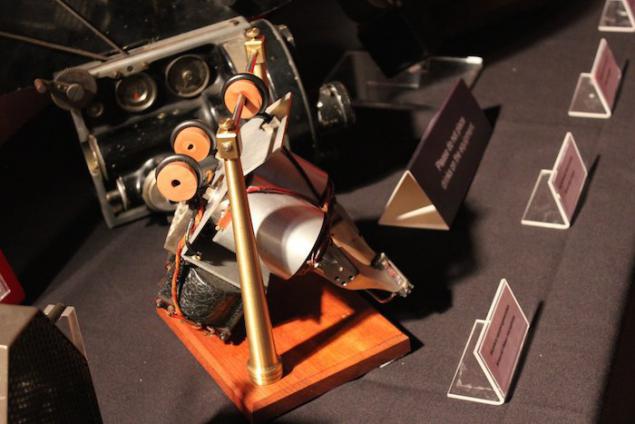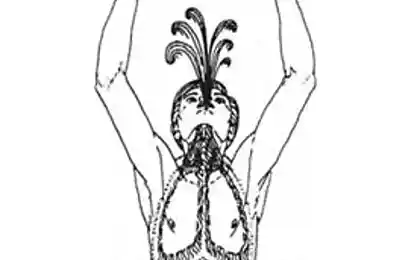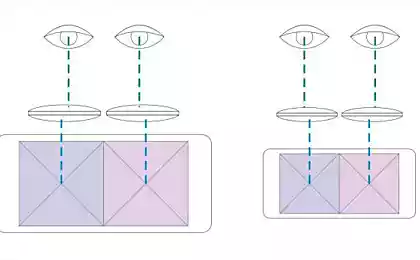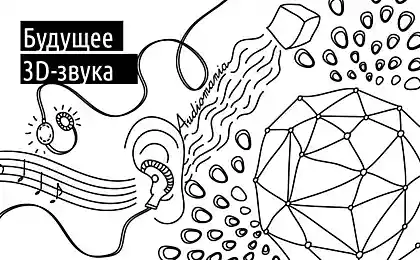1135
The man who invented the stereo
63,329,820
The studio "Abbey Road" (Eng. Abbey Road Studios) in London, largely known for the fact that there is recorded the Beatles, but the event is held in religious buildings now [the original article was published on April 1 2015. - Approx. Perevi.], to commemorate the man who worked there before they were born, John, Paul, George and Ringo, and had a greater impact on the music industry than all the famous foursome.
Alan Dower Blyumleyn (Alan Dower Blumlein), English electrical engineer, born in 1903, invented the stereo sound - a way to play a sound that can be heard as if from several directions. Some of the ideas that he patented in the early 30s, are still being used in stereo, which we create and listen to today.
Blyumleyn was awarded the award plaques on the Institute of Electrical and Electronics Engineers (IEEE) in Abbey Road, where he worked on recording music company EMI.
In the words of his son, Simon Blyumleyn, when the inventor was in the cinema with his wife, he turned to her and said that a blind man will never know where the characters on the screen, because all sound is heard in one direction from one speaker. But he came up with a solution. He called it "a binaural sound," which is now called "Stereo».
In 1934 he recorded a Симфонию Mozart's number 41 (known as "Jupiter") with the London Philharmonic Orchestra at Abbey Road Studios in stereo. Blyumleyn participated in recording the world's first movie with stereo sound - "Train station Hayes" in 1935.
Work Blyumleyna included invention required for recording, editing and playback of audio in stereo, and the name is registered about 70 patents.
Committing him an award plaque, IEEE President Michel Howard said that Blyumleyn invented: the scheme of "shuffle" signal preserving spatial information, bi-directional microphone "couple Blyumleyna", a recording of two independent audio channels on one track, the cutting head and a stereo differential converter that combines directed signals.
Some of these inventions were the exhibits archive EMI, including the "binaural" microphones, already known as « couple Blyumleyna ». A pair of microphones are arranged at right angles to each other to record sound separately, which gives the stereo.

Two channels, compared with one, led to a decrease in the number of tracks on a phonograph record. Blyumleyn came up with a way to read two tracks at once, to get the stereo.
"He has developed an integrated system," - said to me at the event Blyumleyna grandson, also named Alan. "He really is [designed the whole system] from the microphone and sound processing, to the speakers, so that we can actually feel the sound of the left or right; as well as improved cutting vinyl records or, as they said, shellac. "
But the invention Blyumleyna was not fully appreciated until a few decades; For example, the first Beatles record in 1960 continued to be monaural. I asked the sound engineer Robert Alexander, who wrote биографию Blyumleyna what impact it had on the invention of stereo world.
"At that time, in 1930, a very, very small," - he said. "Because most people in the 1930s could hardly afford one speaker, much less two. So EMI, responsible for the technology, it was postponed. " It was again "discovered" in 1956.
Given the invention Blyumleynom technology that now most of us appreciate every day, it's amazing that the inventor is virtually unknown outside the circle of people involved in sound recording.
"Although my grandfather, Alan Dower Blyumleyn mostly revered in the world of audio, possibly even there he did not get much recognition for his work," - said his grandson. "Partly because he died in 1942; Of course, while there was a war, and in fact, the news of his death was classified information, because at that time he was working on-board radar (radar) ».
Moreover, although the invention Blyumleynom stereo was now the main issue, the inventor has also worked in the field of telecommunications, television, and other areas of sound recording, and even created a radar that later played a role in the war. Alan Blyumleyn died in 1942, crashed during a flight on a bomber that was used for testing of the radar itself.
Perhaps now that the artists will go to the famous recording studio, a plaque will remind them that any of them can record your work in stereo thanks to one man.
Source: geektimes.ru/company/audiomania/blog/259740/
The studio "Abbey Road" (Eng. Abbey Road Studios) in London, largely known for the fact that there is recorded the Beatles, but the event is held in religious buildings now [the original article was published on April 1 2015. - Approx. Perevi.], to commemorate the man who worked there before they were born, John, Paul, George and Ringo, and had a greater impact on the music industry than all the famous foursome.
Alan Dower Blyumleyn (Alan Dower Blumlein), English electrical engineer, born in 1903, invented the stereo sound - a way to play a sound that can be heard as if from several directions. Some of the ideas that he patented in the early 30s, are still being used in stereo, which we create and listen to today.
Blyumleyn was awarded the award plaques on the Institute of Electrical and Electronics Engineers (IEEE) in Abbey Road, where he worked on recording music company EMI.
In the words of his son, Simon Blyumleyn, when the inventor was in the cinema with his wife, he turned to her and said that a blind man will never know where the characters on the screen, because all sound is heard in one direction from one speaker. But he came up with a solution. He called it "a binaural sound," which is now called "Stereo».
In 1934 he recorded a Симфонию Mozart's number 41 (known as "Jupiter") with the London Philharmonic Orchestra at Abbey Road Studios in stereo. Blyumleyn participated in recording the world's first movie with stereo sound - "Train station Hayes" in 1935.
Work Blyumleyna included invention required for recording, editing and playback of audio in stereo, and the name is registered about 70 patents.
Committing him an award plaque, IEEE President Michel Howard said that Blyumleyn invented: the scheme of "shuffle" signal preserving spatial information, bi-directional microphone "couple Blyumleyna", a recording of two independent audio channels on one track, the cutting head and a stereo differential converter that combines directed signals.
Some of these inventions were the exhibits archive EMI, including the "binaural" microphones, already known as « couple Blyumleyna ». A pair of microphones are arranged at right angles to each other to record sound separately, which gives the stereo.

Two channels, compared with one, led to a decrease in the number of tracks on a phonograph record. Blyumleyn came up with a way to read two tracks at once, to get the stereo.
"He has developed an integrated system," - said to me at the event Blyumleyna grandson, also named Alan. "He really is [designed the whole system] from the microphone and sound processing, to the speakers, so that we can actually feel the sound of the left or right; as well as improved cutting vinyl records or, as they said, shellac. "
But the invention Blyumleyna was not fully appreciated until a few decades; For example, the first Beatles record in 1960 continued to be monaural. I asked the sound engineer Robert Alexander, who wrote биографию Blyumleyna what impact it had on the invention of stereo world.
"At that time, in 1930, a very, very small," - he said. "Because most people in the 1930s could hardly afford one speaker, much less two. So EMI, responsible for the technology, it was postponed. " It was again "discovered" in 1956.
Given the invention Blyumleynom technology that now most of us appreciate every day, it's amazing that the inventor is virtually unknown outside the circle of people involved in sound recording.
"Although my grandfather, Alan Dower Blyumleyn mostly revered in the world of audio, possibly even there he did not get much recognition for his work," - said his grandson. "Partly because he died in 1942; Of course, while there was a war, and in fact, the news of his death was classified information, because at that time he was working on-board radar (radar) ».
Moreover, although the invention Blyumleynom stereo was now the main issue, the inventor has also worked in the field of telecommunications, television, and other areas of sound recording, and even created a radar that later played a role in the war. Alan Blyumleyn died in 1942, crashed during a flight on a bomber that was used for testing of the radar itself.
Perhaps now that the artists will go to the famous recording studio, a plaque will remind them that any of them can record your work in stereo thanks to one man.
Source: geektimes.ru/company/audiomania/blog/259740/























